There can be your advertisement
300x150
Repair in a Khrushchyovka: Where You Can Save Money and Where It's Better Not to Skimp
The main rule: it's better to do it simply but properly than beautifully but with violations of technology
Important: The information in the article is for informational purposes only. Specific prices may vary depending on the region and selected materials. Before starting the repair, it is recommended to get several estimates from different contractors and carefully study the technical characteristics of the materials.
Bought a Khrushchyovka and now you're standing in the middle of the room, assessing the scale of upcoming work. Crooked walls, Soviet wiring, accordion radiators and a bathroom the size of a storage room. Estimates from builders shock - the numbers are comparable to the cost of the apartment itself. And a logical question arises: where to cut the budget so as not to end up with nothing?
But what if you save in the wrong place - that means, having to redo everything all over again in a year? Experienced foremen know: there are things in a Khrushchyovka where you absolutely cannot save, and there are items where you can halve the budget without losing quality. We'll examine this with experts, where it's worth spending money and where you can save without compromising the result.
Key points from the article:
- Electrical wiring and plumbing - areas where saving will lead to a catastrophe;
- On finishing materials, you can save up to 40% without losing quality;
- Mid-range plumbing fixtures last as long as premium ones;
- Drop ceilings in a Khrushchyovka are more practical and cheaper than any other option;
- DIY painting and wallpapering save 30-50% of the estimate;
- Window replacement - an investment that pays off in 3-5 years.
Red zone: where saving leads to disaster
Electrical wiring in a Khrushchyovka is not just replacing wires, but a matter of life and death. Aluminum wiring from the 1960s is not designed for modern loads. A washing machine, microwave oven, air conditioner - all this can cause a fire in the old wiring.
- Full replacement of wiring costs 80-120 thousand rubles in a two-bedroom apartment, but you shouldn't save here. Use only copper wires with a cross-section of no less than 2.5 mm for sockets and 1.5 mm for lighting. Aluminum is cheaper, but its service life is twice as short.
- A circuit breaker with automatic switches and RCD - a mandatory expense. Old fuses can't handle modern loads. A quality panel costs 15-25 thousand rubles, but it protects against short circuits and fires.
- Replacing water supply and sewage risers - another critical point. Old cast iron pipes can burst at any moment, flooding neighbors from below. Replacing a riser costs 30-50 thousand rubles, but it's cheaper than legal disputes with neighbors.
Load-bearing walls should not be touched even for the sake of saving space. Demolishing load-bearing structures without a project is a direct path to collapse. If it's really needed - order a reinforcement project, but that’s expensive: from 150 thousand rubles for consultation and calculations.
Plumbing: Goldilocks zone vs premium
You can save significantly on plumbing without losing functionality. A toilet for 15 thousand rubles works just as well as one for 50 thousand. The difference is in design and brands, not in the quality of flushing.
- Mid-range mixers (7-12 thousand rubles) last as long as premium ones for 25-30 thousand rubles. The key is to choose well-known brands with warranty. Cheap Chinese noname mixers for 2-3 thousand rubles will leak in half a year.
- An acrylic bathtub is more practical than a cast iron one in a Khrushchyovka. It's lighter (important for floors), warmer, cheaper and easier to install. A good acrylic bathtub costs 15-25 thousand rubles compared to 40-60 thousand for cast iron.
- A shower cabin instead of a bathtub saves space and money. In a small bathroom, every centimeter counts. A simple cabin with a tray costs 20-30 thousand rubles, and it frees up twice as much space.
- Tiles for the bathroom - a category where you can save significantly. Russian tiles of quality equal to European ones, but cost 2-3 times less. The key is proper installation, not material price.
Design: Savings on finishing materials - where you shouldn't overpay
- Wallpaper - a classic way to save on finishing. Quality Russian wallpaper costs 500-1500 rubles per roll versus 2000-5000 for imported ones. They are applied and last the same way.
- Mid-range laminate (32-33) is sufficient for residential spaces. You don't need to buy commercial 34 class - it's designed for offices with high foot traffic. Good laminate costs 800-1200 rubles per square meter.
- Paint for walls - another area to save money. Russian paints like 'Tikkurila' or 'Dulux' cost 1.5-2 times less than imported analogs at the same quality. The key is proper wall preparation.
- Drop ceilings in Khrushchyovka - the most practical and economical option. They hide irregularities, utilities, are easy to clean, and cost 300-500 rubles per square meter. Gypsum board ceilings are more expensive and reduce ceiling height.
- Linoleum for kitchen and hallway is more practical than tiles. Modern linoleum imitates any materials, is easy to clean, warm underfoot, and costs 3-4 times less than ceramic granite.
Design: Comfort investments in windows and doors
- Plastic windows - an investment that pays off quickly. Quality windows cost 15-25 thousand rubles per square meter, but save 20-30% on heating annually. In a Khrushchyovka with poor thermal insulation, this is especially relevant.
- Double-glazed windows in Khrushchyovka are sufficient. Triple-glazed windows are only needed when approaching noisy highways. Energy-efficient glass costs extra, but reduces heat loss by 15-20%.
- Interior doors can be chosen based on appearance, not price. Doors for 8-12 thousand rubles look just as good as those for 25-30 thousand. The difference is in the thickness of the door and hardware, which isn't critical in an apartment.
- Entrance doors - a position where it's dangerous to save. A good metal door costs 30-50 thousand rubles, but protects from break-ins and retains heat. Cheap doors are an invitation to thieves.
Hardware for windows and doors must be of good quality. Poor handles and locks break within a year or two, and replacement costs more than the initial investment for quality.
Design: Functional kitchen - functionality matters more than beauty
- Kitchen cabinets can be ordered from local manufacturers and save 40-50%. Russian factories make furniture no worse than European, but without extra costs for branding. The key is quality hardware.
- Countertops made of artificial stone are more practical than natural. They're 2-3 times cheaper, easier to maintain, don't absorb stains and odors. Quartz aggregate is the optimal choice in price-to-quality ratio.
- Mid-range appliances functionally don't lag behind premium ones. A refrigerator for 40-60 thousand rubles freezes just as well as one for 120 thousand. The overpayment is for design and additional features.
- A stainless steel sink is more practical than composite materials. It's cheaper, easier to maintain, not afraid of high temperatures and cleaning agents. Composite sinks look better but require delicate care.
- A kitchen mixer should be chosen with a high spout and rotating mechanism. This matters more than material and design. A good functional mixer costs 8-12 thousand rubles.
Design: What to do yourself, and where to hire professionals
- Demolition of old finishing can be done by yourself. Remove tiles, peel off wallpaper, remove non-load-bearing partitions - dirty but simple work. Savings: 20-30 thousand rubles on a two-bedroom apartment.
- Painting walls and hanging wallpaper - another area for savings. With time and patience, you can save 50-70 thousand rubles. The key is proper surface preparation.
- Laying laminate and linoleum is accessible to anyone with hands. Modern locking systems are assembled like a constructor. Savings on labor: 15-25 thousand rubles.
- Electrical and plumbing work should be left to professionals. Mistakes in these systems can cost lives or a lot of money. A good electrician is worth his price.
- Tiling requires experience and tools. Misplaced tiles ruin the overall look of the repair. It's better to hire a master and get a quality guarantee.
- Plastering and spackling walls - work for professionals. Only an experienced master can make perfectly flat walls for painting. Saving here will end up in rework.
Work sequence: how not to pay twice
Proper order of repairs saves money and time. First, all the “dirty” work: demolition, utility installation, plastering. Then the finishing touches.
- Replacing windows before plastering prevents the need for re-plastering of the frames. Windows dust and can damage fresh finishing. Construction foam still needs to be plastered over.
- Drop ceilings are installed last, when all walls are ready. But electrical wiring for chandeliers and fixtures needs to be laid in advance.
- Floors are installed after all wall work but before installing baseboards. Baseboards will hide cutting imperfections at the walls.
- Plumbing is installed after tiling, but pipe holes are made in advance. This avoids re-drilling the finished tiles.
Repair in a Khrushchyovka - it's the art of reasonable economy. Spend money on safety and functionality, save on beauty and prestige. The main rule: it's better to do it simply but properly than beautifully but with violations of technology. The house must be safe, not just beautiful.
Cover: Design project by Anna Bereznyak
More articles:
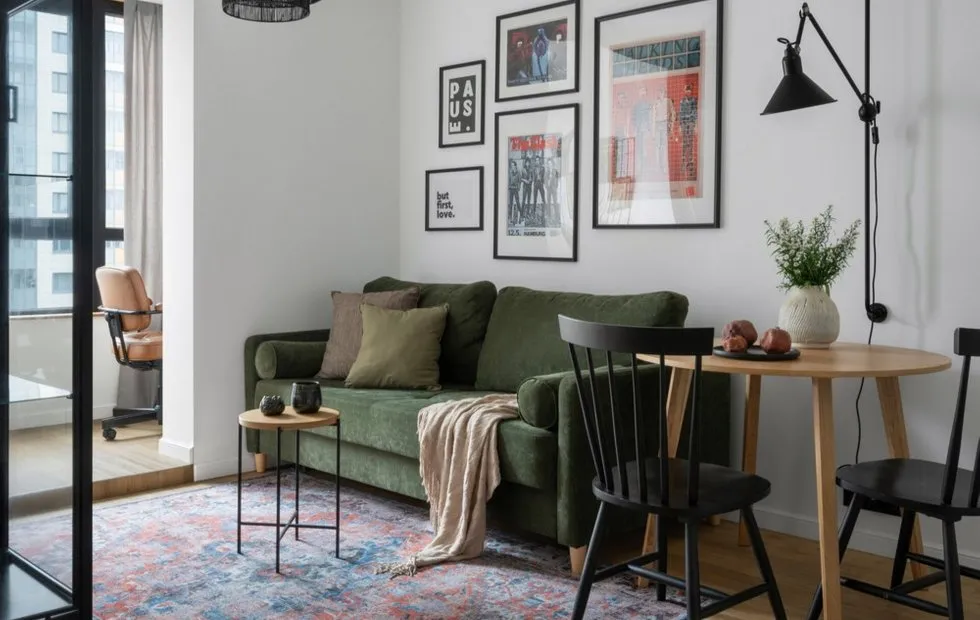 Design without renovation: how to change your apartment in 3 days and 10 thousand rubles
Design without renovation: how to change your apartment in 3 days and 10 thousand rubles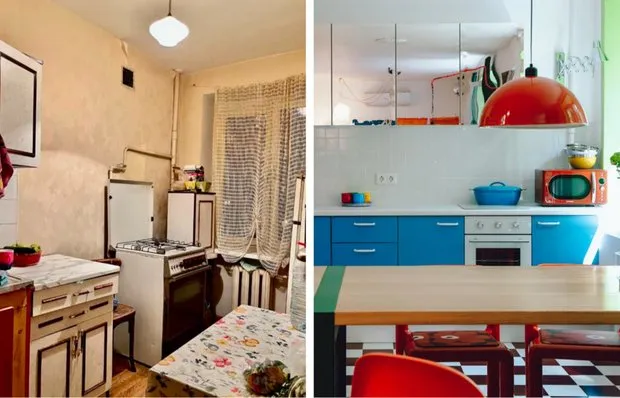 Before and After: How We Transformed a Boring Kitchen in an Old Building
Before and After: How We Transformed a Boring Kitchen in an Old Building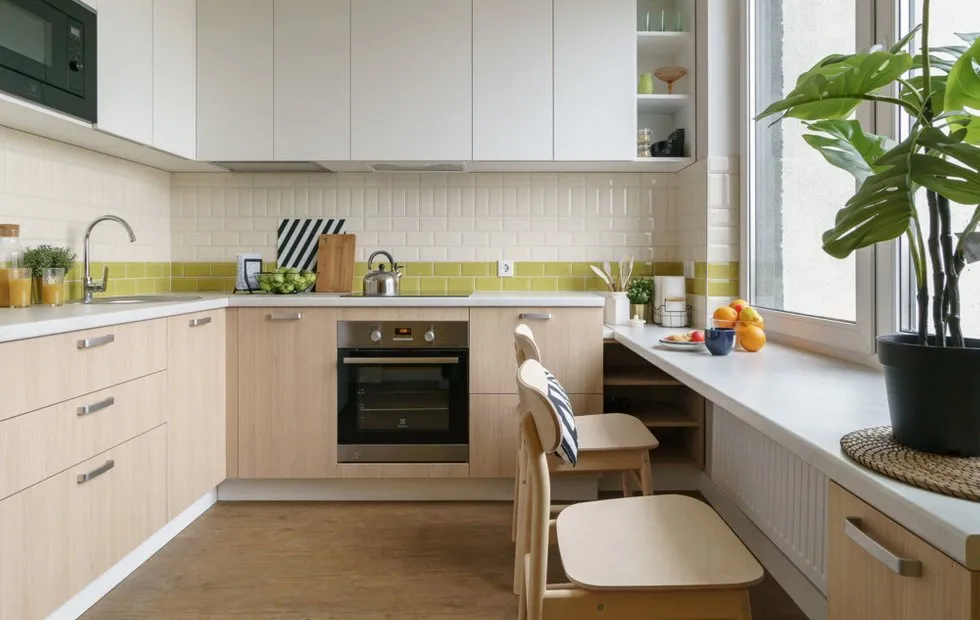 Repairing a Studio for 150 Thousand Rubles: Transforming a Studio into Stylish Living Space
Repairing a Studio for 150 Thousand Rubles: Transforming a Studio into Stylish Living Space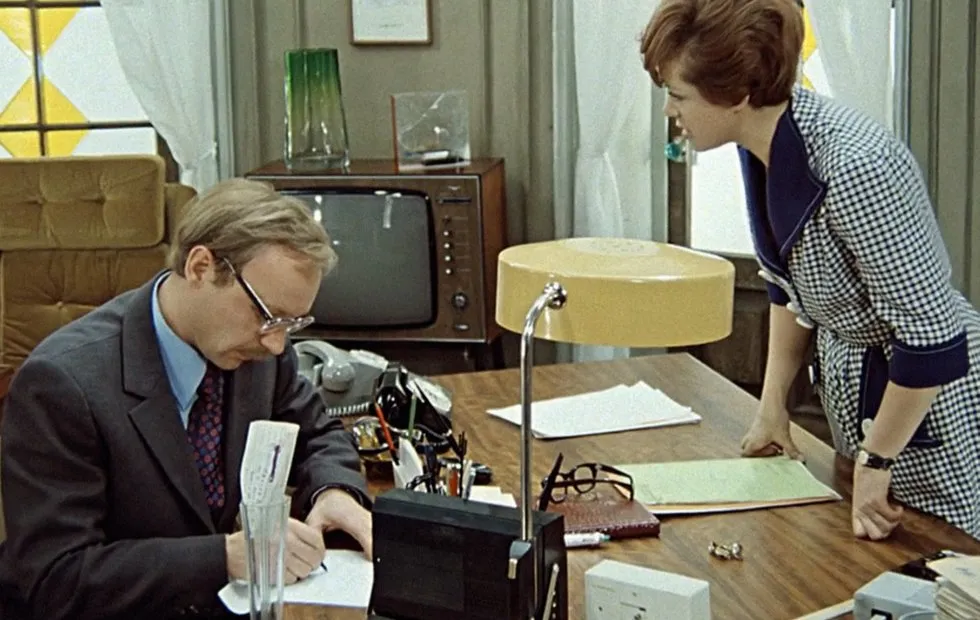 How Apartments Were Decorated in Soviet Films: From 'Irony of Fate' to 'Service Romance'
How Apartments Were Decorated in Soviet Films: From 'Irony of Fate' to 'Service Romance'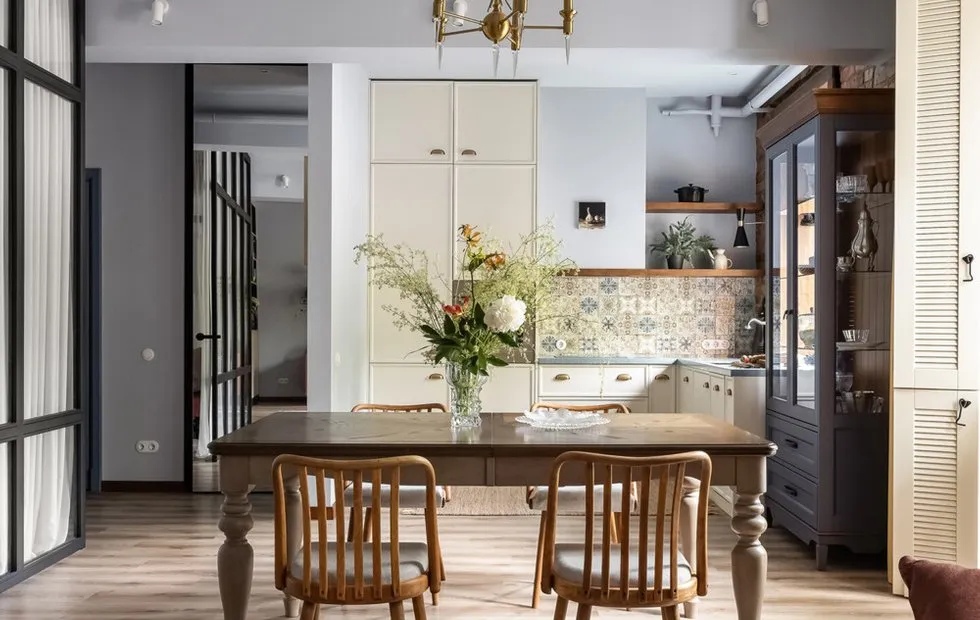 Why Stalin-era Kitchens Are Better Than Modern Ones: 5 Genius Solutions from the Past
Why Stalin-era Kitchens Are Better Than Modern Ones: 5 Genius Solutions from the Past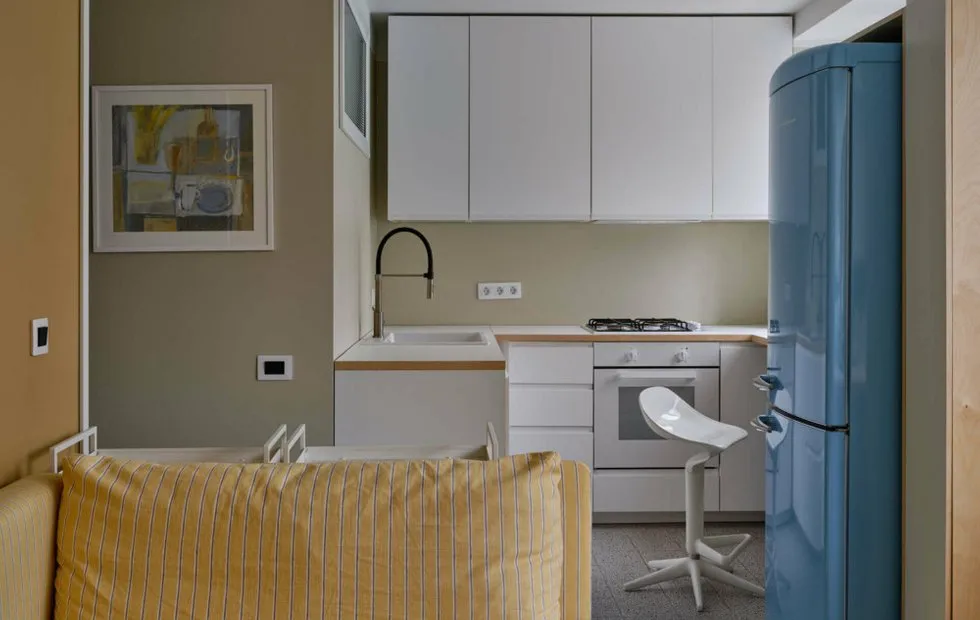 5 Tips That Transform a Khrushchyovka into a Stylish Space
5 Tips That Transform a Khrushchyovka into a Stylish Space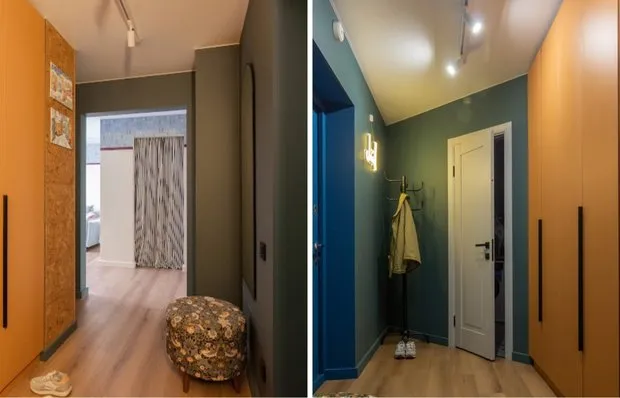 How to Make a Functional 5 m² Hallway with an Unusual Shape
How to Make a Functional 5 m² Hallway with an Unusual Shape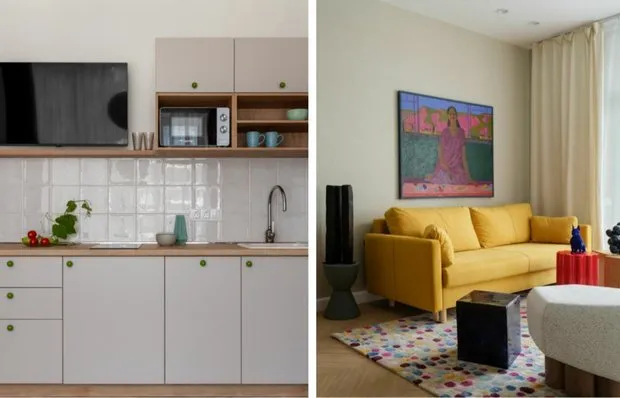 7 Budget Ideas for Modern Interior
7 Budget Ideas for Modern Interior